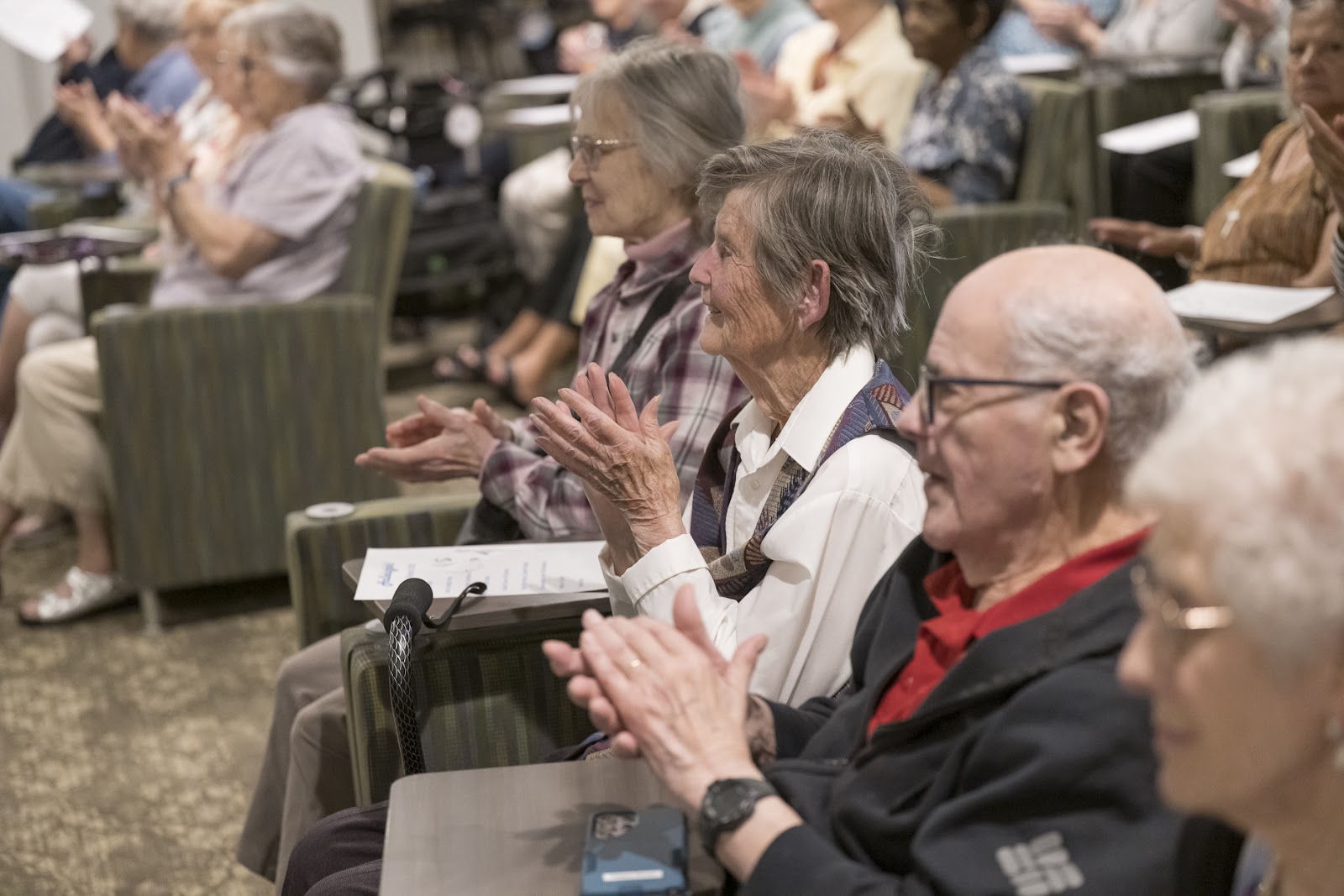What senior living communities will look like in 2030
Canada's demographic landscape is shifting dramatically. Current projections indicate that the 80+ population will increase by approximately 40% by 2030, while the caregiver-age population (45-64) is expected to grow very little or plateau entirely.
This imbalance is fundamentally reshaping how families think about senior living and retirement planning. For those exploring senior living options today, understanding these changes matters because the communities being built now will serve residents for decades to come.
The senior living industry is responding to these realities with innovative approaches that prioritize independence, wellness, and quality of life in ways that previous generations couldn't have imagined.

The scale of change ahead
The projected number of Canadians over 60 will reach approximately 10.9 million by 2030, creating unprecedented demand for housing, support, and community services.
Meeting the rapidly growing demand for seniors housing is a significant challenge for Canada’s real estate and healthcare sectors. Analysis shows that Canada will need approximately 450,000 additional retirement and long-term care units by 2040 to keep pace with its aging population, effectively doubling the number of existing homes.
This means new construction must accelerate to nearly triple the annual build rate seen over the past decade to avoid worsening waitlists and shortages. Yet, new senior housing construction starts have fallen to their lowest level in more than 10 years due to rising costs and economic constraints.
These pressures are driving the industry to fundamentally rethink how senior living communities are designed and operated.
How are senior living models changing?
Traditional continuing care retirement communities (residences offering a range of care from independent living to nursing support) are now evolving into life plan communities. These modern communities go beyond basic care, focusing on helping seniors to lead engaged, active lives while still providing a full continuum of on-site health and support services as needs change over time.
We have seen that today's seniors approach retirement differently than previous generations: rather than viewing it as a time to slow down, many see it as an opportunity for travel, active living, lifelong learning, and personal growth. Senior living communities are adapting their programming and facilities to support these active lifestyles while providing the security of on-site care and support when needed.
This shift reflects changing expectations about aging.
Residents want communities that support their individual lifestyles, goals and interests rather than simply managing their care needs. The most successful communities will be those that balance independence with appropriate support services.

Technology integration in senior communities
Many older adults today are already comfortable with smartphones, tablets, and smart home devices, so it makes sense that senior living communities would build on this familiarity.
We anticipate that smart home technology will become standard in these communities by 2030, responding to residents' desire for comfort and independence. Automated lighting systems could adjust throughout the day to support healthy sleep patterns, while climate control systems might learn individual preferences and adjust accordingly. Security systems will provide assurance of safety without feeling intrusive or institutional.
For seniors who value their independence but have concerns about their wellness, health monitoring technology is already widely available. Wearable devices and environmental sensors can track vital signs and detect medical emergencies like falls, immediately alerting the care team when intervention is needed.
Current Health Monitoring Options
Exciting tech is already being used by various demographics:
- Apple Watch - Automatic fall detection for users over 65, heart rate monitoring, ECG, and blood oxygen tracking
- Medical Guardian - Long-range medical alert systems with 24/7 monitoring
- MobileHelp - Fast emergency response with GPS tracking capabilities
Predictive health care approaches
Given the increasing sophistication of health data analysis, it seems likely that artificial intelligence could help identify potential health issues before they become serious problems. This proactive approach would allow care teams to address concerns early, potentially preventing hospitalizations and supporting residents to maintain their independence longer.
For seniors who find travelling to medical appointments challenging, telehealth services are a natural fit for community life. Residents appreciate being able to consult with specialists and manage routine appointments without leaving their community, reducing transportation concerns while maintaining access to comprehensive medical care.
What does modern wellness programming include?
As older adults increasingly prioritize active aging and quality of life, wellness programming in 2030 would likely need to address much more than basic physical health.
We expect comprehensive programs to encompass physical health, mental well-being, social connection, and personal fulfillment. Communities might employ specialized staff, including geriatric care managers, nutritionists, physical therapists, and wellness coordinators, to support residents' diverse interests and needs.
For those who want to maintain their strength and mobility, physical fitness programs would probably be tailored to different ability levels and interests rather than following a one-size-fits-all approach. Nutrition programs could go beyond meal planning to include education about healthy aging and managing chronic conditions through diet, appealing to individuals who want to take an active role in their health.
Social connection and lifelong learning
Many older adults worry about becoming isolated from younger generations and losing their sense of purpose. It makes sense that communities would develop intergenerational programs connecting residents with local educational institutions and community organizations.
These programs would provide meaningful ways for seniors to share their knowledge and experience while staying connected to the broader community.
For those who have always valued learning and growth, lifelong learning opportunities seem likely to expand significantly. Communities might partner with local colleges to offer courses on-site, provide access to online learning platforms, or develop their own educational programming around residents' interests and expertise.

Understanding smart retirement communities
For retirees and families evaluating their options, understanding what makes a community "smart" can help inform their decisions. Smart retirement communities would likely integrate technology, personalized care, and lifestyle amenities to create supportive environments that adapt to residents' changing needs over time.
As most seniors prefer to age in place when possible, healthcare delivery appears to be shifting from hospital-based to community-based models. We anticipate that senior living communities could incorporate more sophisticated medical services on-site, allowing residents to receive complex care without relocating to different facilities. This approach would improve continuity of care while allowing residents to remain in familiar surroundings with established relationships.
It seems reasonable that data-driven insights could help communities optimize their services while respecting residents' preferences for independence. Technology would likely work behind the scenes to enhance safety and convenience rather than replacing the human interaction and care that seniors value most.
Preparing for tomorrow's senior living
The expected evolution of senior living communities by 2030 represents a fundamental shift toward more personalized, technology-enabled, and wellness-focused care. These changes address the reality of an aging population that wants to remain active and engaged throughout their later years.
The growing senior population presents both challenges and opportunities. While the demand for services will strain traditional models, it also drives innovation in community design, care delivery, and lifestyle programming.
United Active Living is among the providers already implementing many of these forward-thinking approaches, creating communities that anticipate future needs while serving today's residents.
For families considering senior living options, understanding these trends can help inform decisions about timing, location, and the type of community that will best serve long-term needs.

%201.svg)
%201.svg)
















